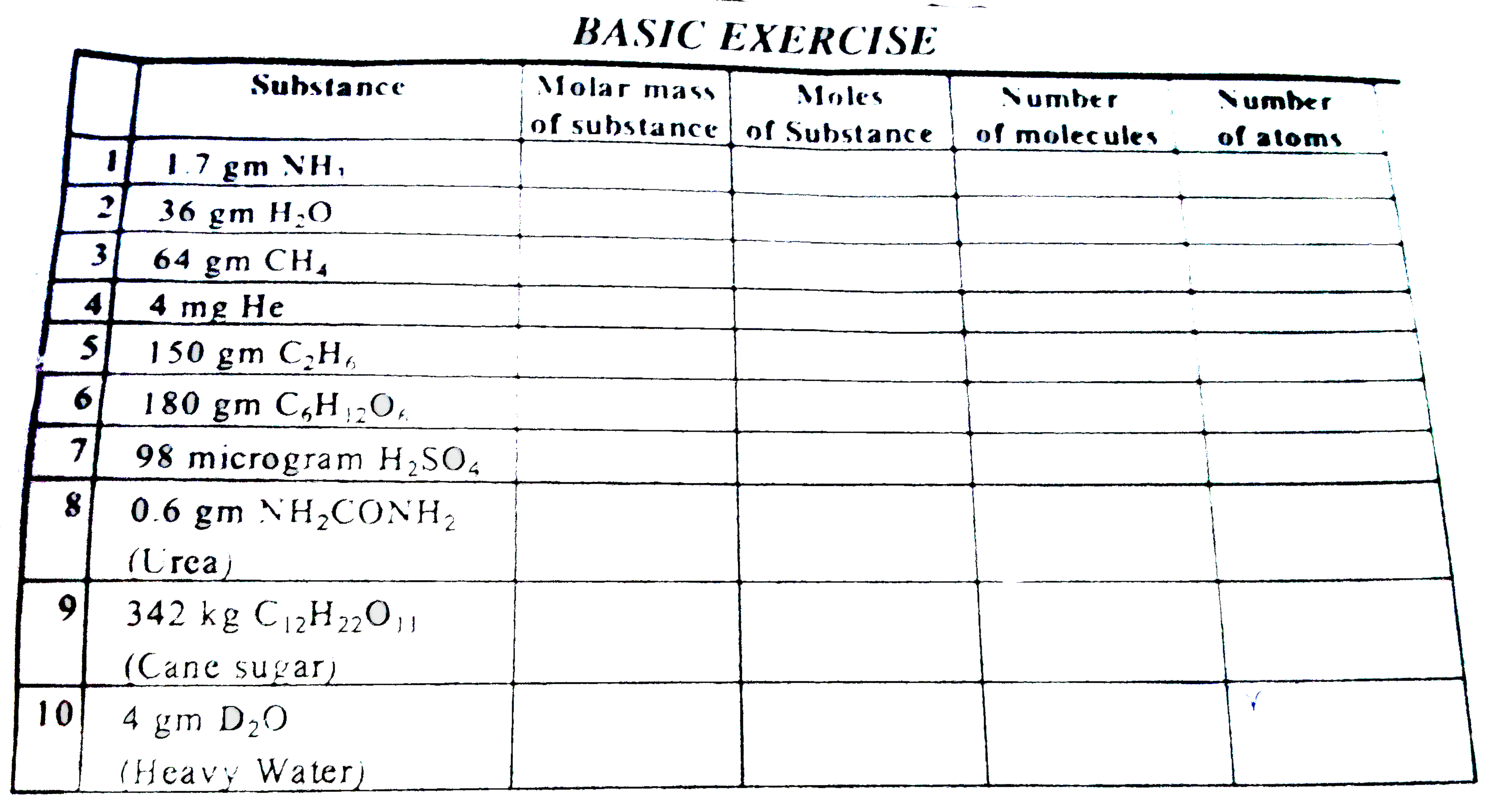The reactant which is entirely consumed in reaction is known as limiting reagent. In the reaction 2A+4B→3C+4D, when 5 moles of A react with 6 moles of B, then which is the limiting reagent and what would be the amount of C formed respectively?
2A+4B→3C+4D
According to the above equation, 2 moles of ‘A’ require 4 moles of ‘B’ for the reaction. Hence, for 5 moles of ‘A’, the moles of ‘B’ required = = 10 mol B
But we have only 6 moles of ‘B’, hence, ‘B’ is the limiting reagent. So amount of ‘C’ formed is determined by amount of ‘B’.
Since 4 moles of ‘B’ give 3 moles of ‘C’. Hence 6 moles of ‘B’ will give 6 mol of B×3 mol of C4 mol of B=4.5mol of C
Topper's Solved these Questions
- STOICHIOMETRY - IBOOK - VMC MODULES ENGLISHCHAPTER - STOICHIOMETRY - IEXERCISE - Level -0 (Long Answer Type)
7 Videos
- STOICHIOMETRY - IBOOK - VMC MODULES ENGLISHCHAPTER - STOICHIOMETRY - IEXERCISE - Level - 1
75 Videos
- STOICHIOMETRY - IBOOK - VMC MODULES ENGLISHCHAPTER - STOICHIOMETRY - IEXERCISE - (Level - 0 (Short Answer Type - I)
7 Videos
- STATES OF MATTERBOOK - VMC MODULES ENGLISHCHAPTER - STATES OF MATTEREXERCISE - IN-CHAPTER EXERCISE-I
10 Videos
- STOICHIOMETRY-IIBOOK - VMC MODULES ENGLISHCHAPTER - STOICHIOMETRY-IIEXERCISE - JEE Advanced (Archive)
43 Videos
Similar Questions
The reactant which is entirely consumed in reaction is known as limiting reagent. In the reaction 2A+4B→3C+4D, when 5 moles of A react with 6 moles of B, then
(a) which is the limiting reagent?
(b) calculate the amount of C formed?
View SolutionFor the reaction A+2B→C, 5 moles of A and 8 mole of B will produce
View Solution
Knowledge Check
The reactant which is entirely consumed in reaction is known as limiting reagent. In the reaction 2A+4B→3C+4D, when 5 moles of A react with 6 moles of B, then
(a) which is the limiting reagent?
(b) calculate the amount of C formed?AC, 4.5 molBB, 4.5 molCB, 3.5 molDC, 4.0 molIn the reaction A+B⇔C+D, 4 moles of A
react with 4 moles of B and form 2 moles each of C and D. The value of Ke for the reaction isA2B3C1D1.56
For the reaction A+2B→C,5moles of A and 8moles of B will produce :-
View SolutionLimiting reagent in a chemical reaction is that reactant which
View SolutionStatement-I : A reactant that is entirely consumed when a reaction goes to completion is known as limiting reactant.
Because
Statement-II : The amount of reactant limits the amount of product formed.
View SolutionFor the reaction :
7A+13B+15C⇒17P
If 15 moles of A, 26 moles of B and 30.5 moles of C are taken
initially, then limiting reactant is:
View Solution
A→2B+C
3B→2D
Find moles of D produced if initially 3 moles of A are taken.
View SolutionA limiting reagent is the reactant which gets completely ..........during the reaction.
View Solution
